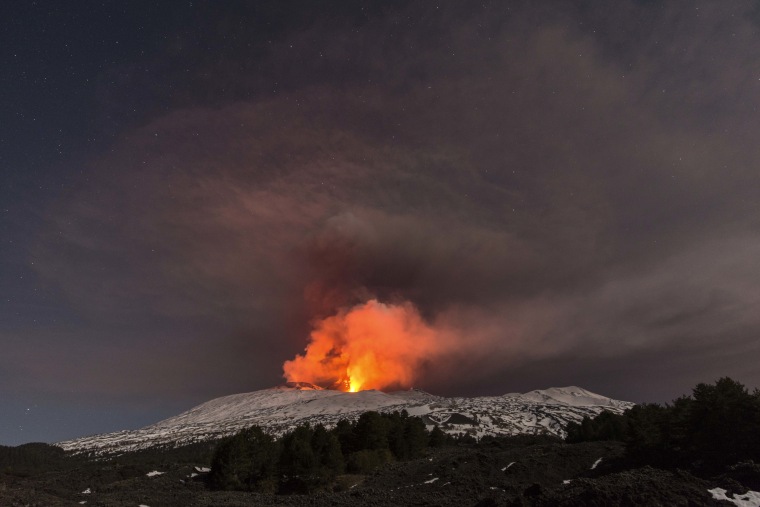ROME — Scientists, tourists and a television news crew were among 10 people injured in a “violent explosion” Thursday when magma spewing from Sicily's Mount Etna hit snow, officials said.
The blast was caused by a “phreatic eruption” in which fast-moving lava moves over snow, creating high-pressure pockets of steam, Marco Neri, a volcanologist at Italy’s National Institute of Geophysics and Volcanology told NBC News.
None of the injuries were serious, he said, although local media reported several of the wounded were being treated at area hospitals.
Etna has been erupting for days, periodically spewing ash but not causing disruption to local residents or the airport at nearby Catania.
Among the injured was Boris Behncke, a scientist at the same institute as Neri.
"I received a bruise on my head but am generally fine and [now] having a good, well-deserved beer,” Behncke posted on Facebook, describing the ordeal as a "violent explosion at the contact between flowing lava and thick snow."

Members of a BBC news crew were also slightly hurt, according to correspondent Rebecca Morelle who tweeted: “Running down a mountain pelted by rocks, dodging burning boulders and boiling steam - not an experience I ever ever want to repeat.”
She said the episode was a “reminder of how dangerous and unpredictable volcanoes can be,” describing it as a “very lucky escape” and "extremely scary."
A 78-year-old woman was close to the incident "but safely got away," she added.
Neri said Etna has been erupting from its south-east crater and eventually reached an area called Belvedere that was covered in snow.
"When the lava flows over a lot of snow at high speed, it can trap the snow underneath," Neri said. “The snow then melts into water, then becomes vapor, and the pressure on the cap made of lava eventually leads to an explosion called phreatic eruption. This is what happened in this case."
He said the explosion, which happened at 11:43 a.m. local time (6:43 a.m. ET), “threw pieces of lava in the air and ten people in the area were hit and injured, none seriously.”
The USGS says phreatic eruptions can generate “an explosion of steam, water, ash, blocks, and bombs” as surface water is heated by lava as hot as 2,100 degrees.
